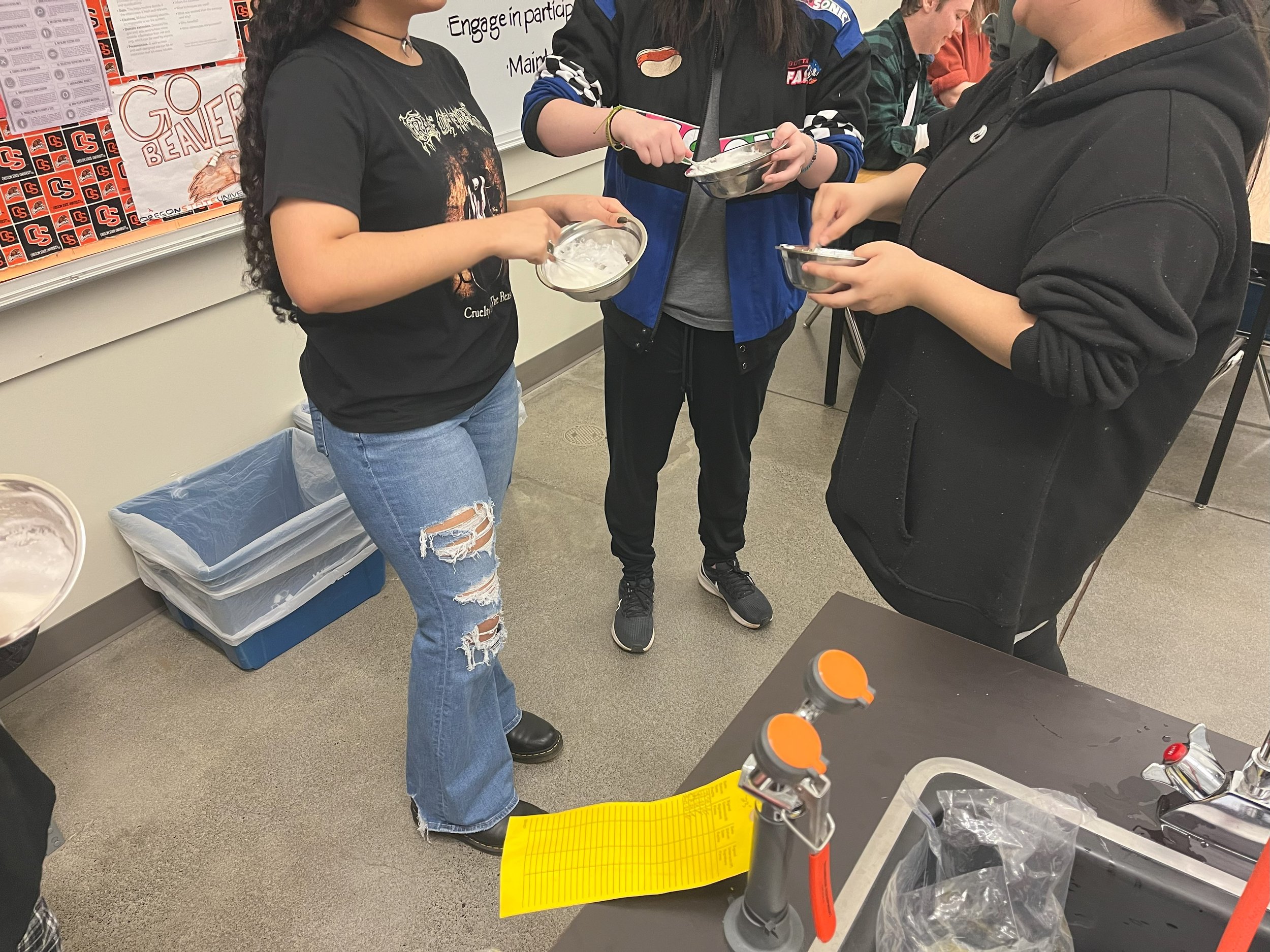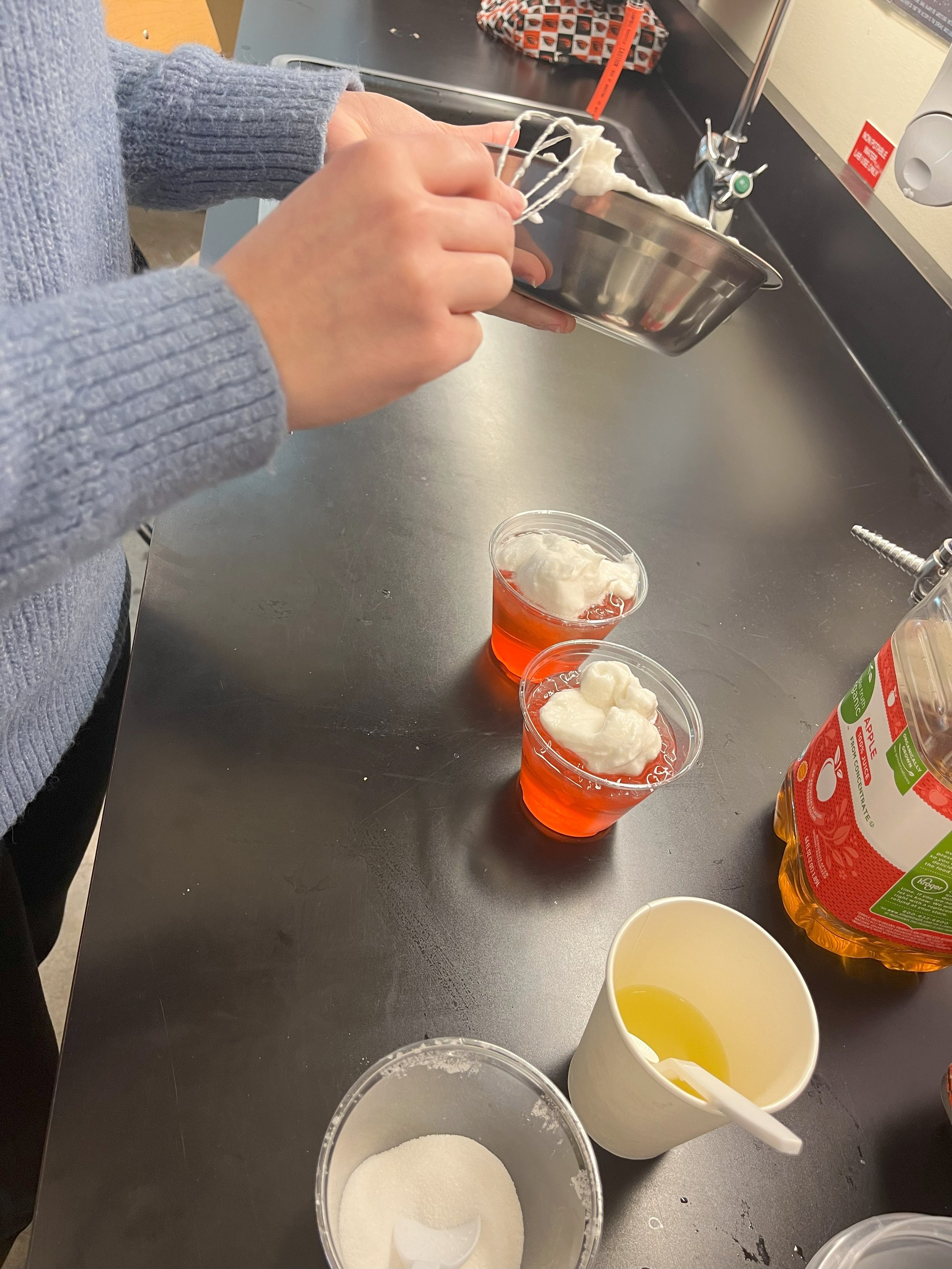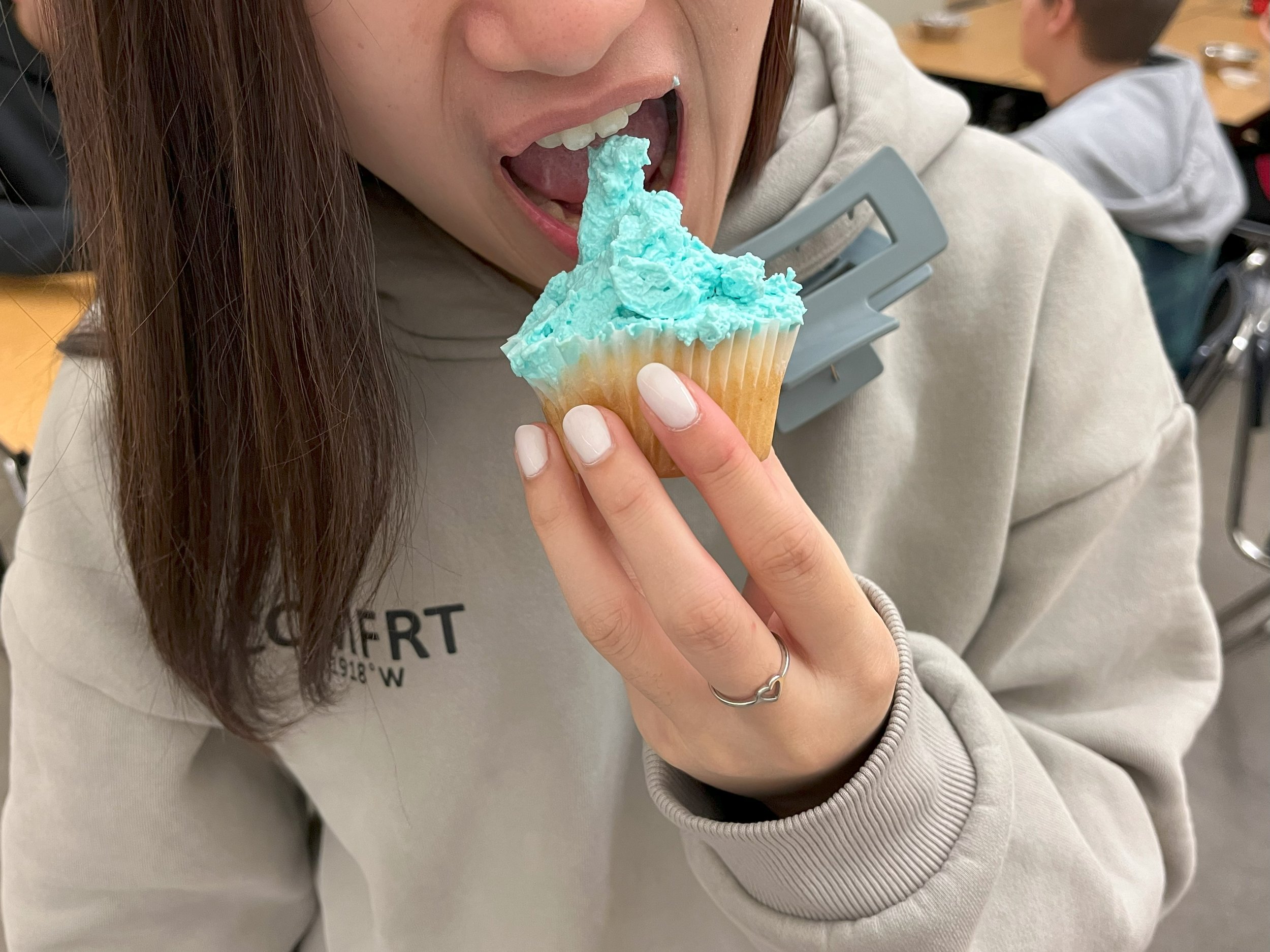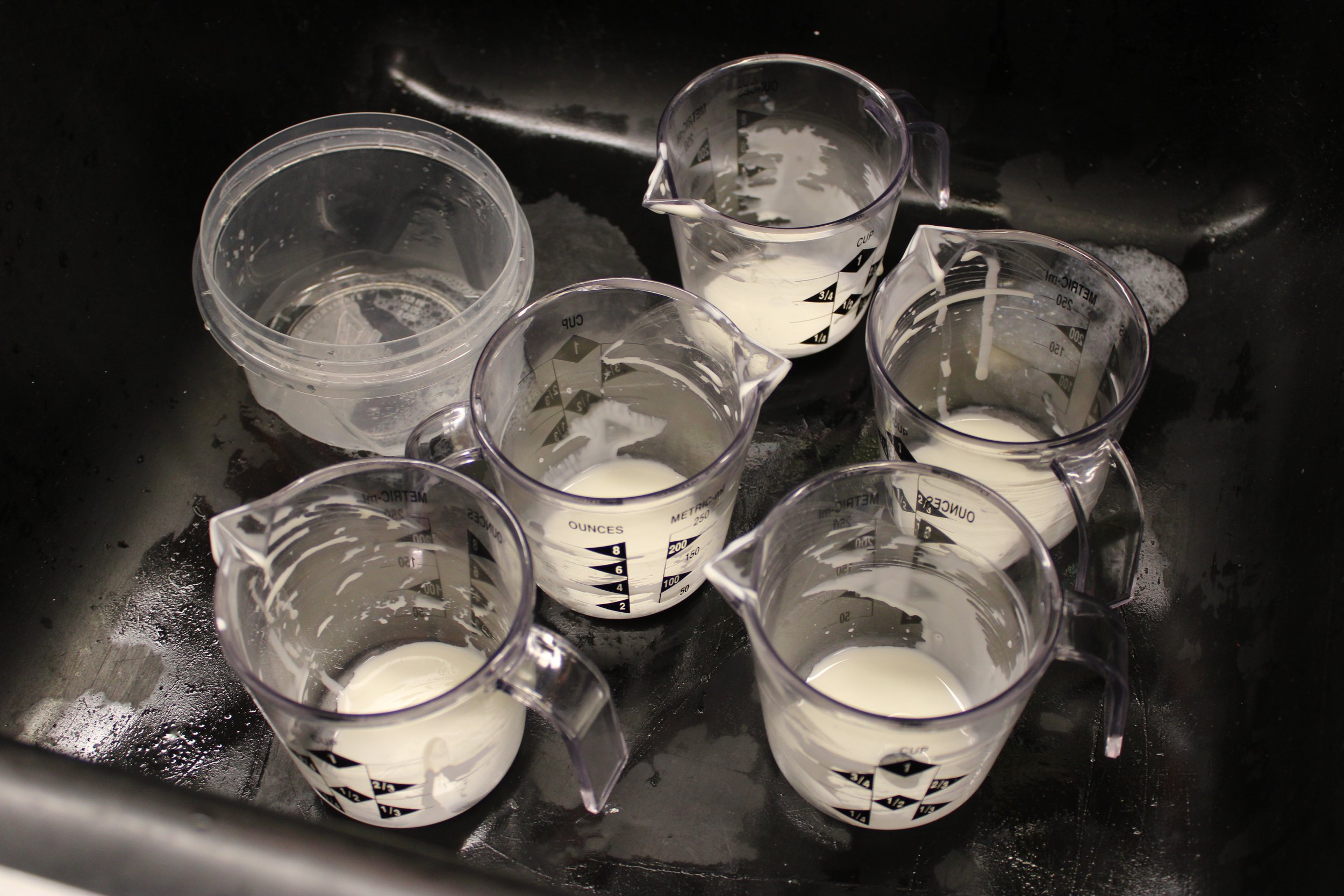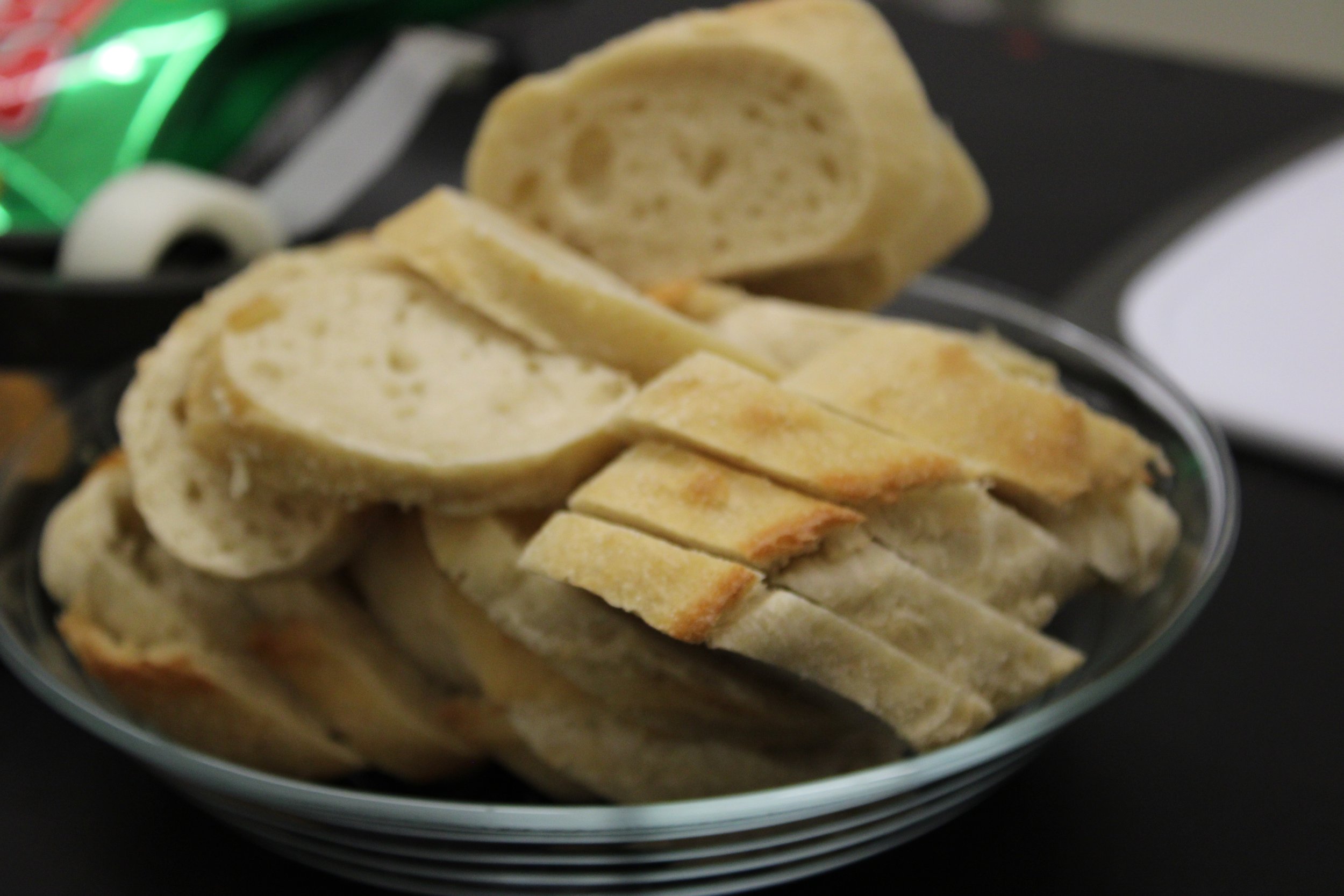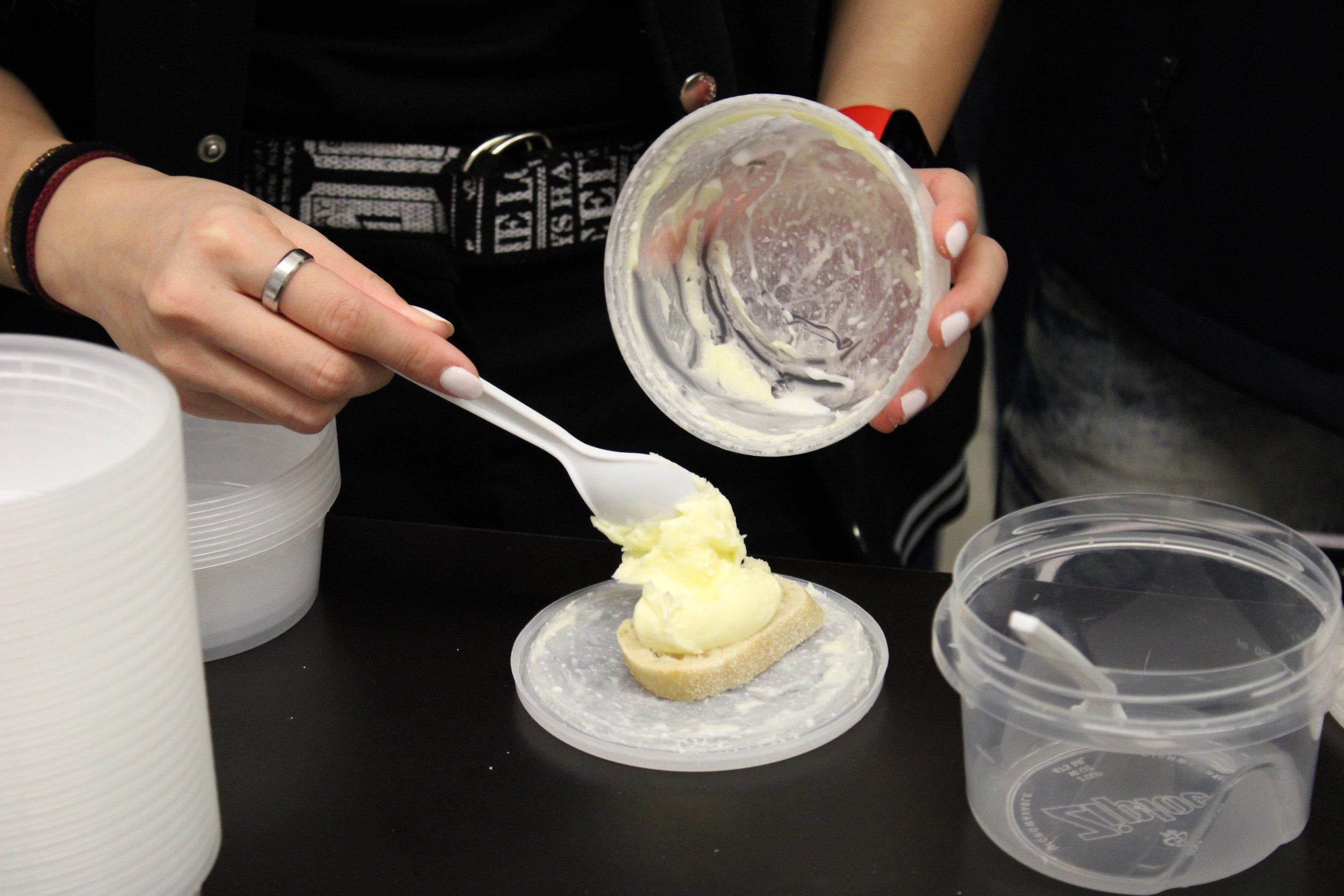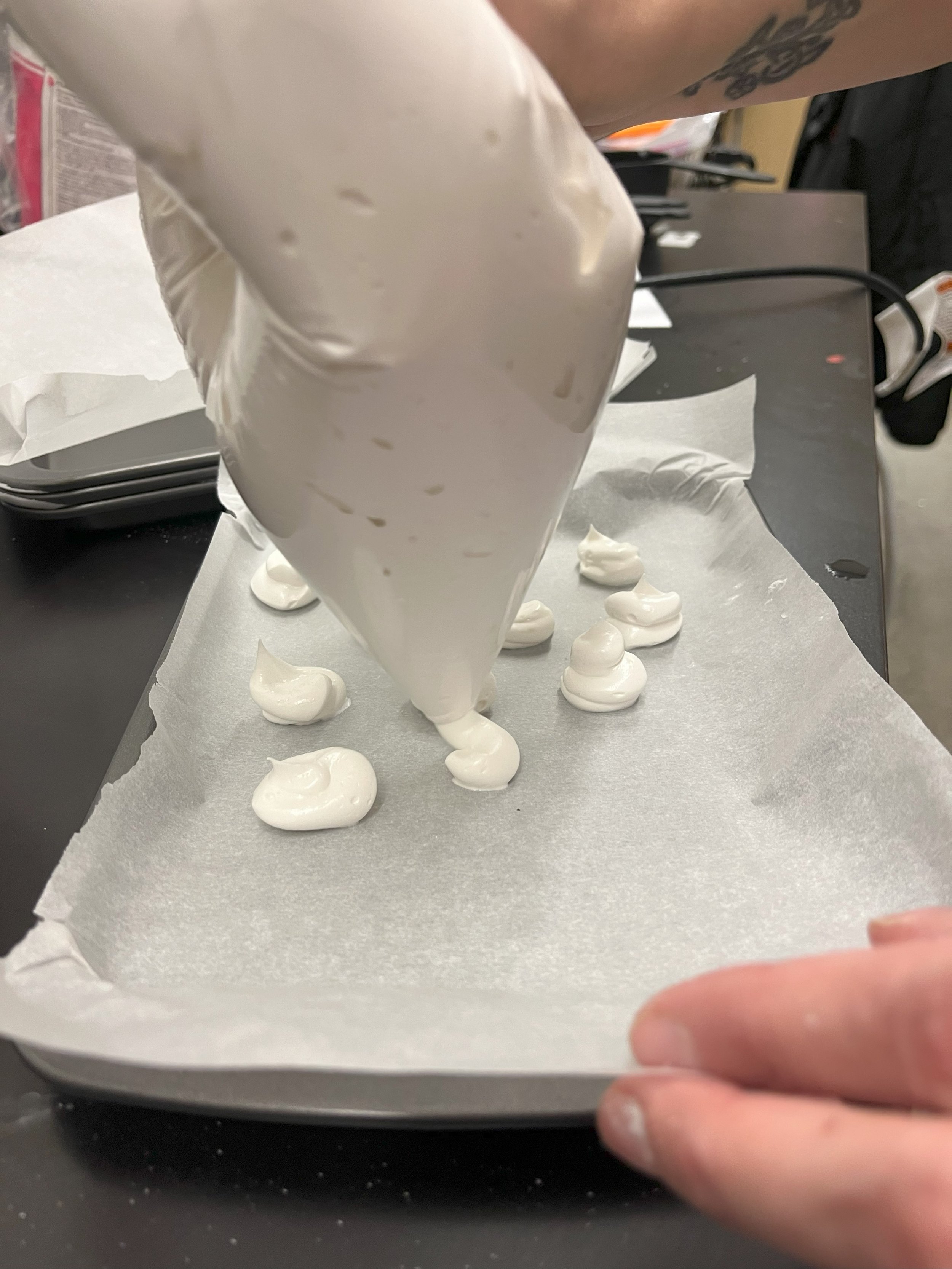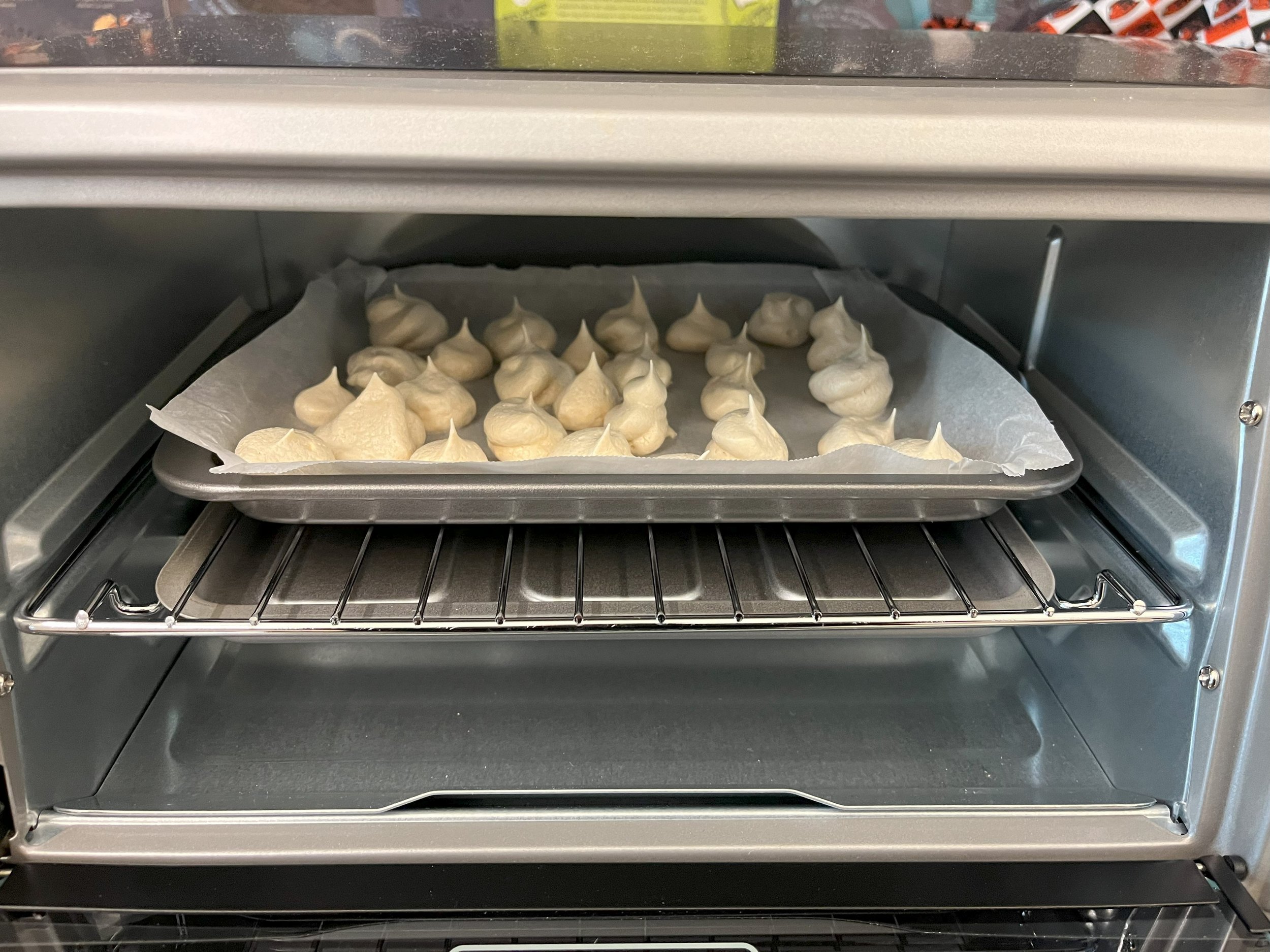Gastronomy: Science of Food - Sign Me Up!
Mrs. Beck’s inspiration and two Opportunity Grants helped kick-start a new science class at David Douglas High School, Gastronomy: Science of Food. The grants provided students with tools and materials to learn about food and have hands-on experiences (like many other classes), but this course emphasizes the science of foods and applies concepts used in their previous biology and general science courses. Students will see why certain chemicals in food cause food to change, what causes egg whites to turn white, what denaturing is and how it works on different types of foods, how to cook the “perfect egg”, what causes the fluffiness when making whipped cream versus butter, and what changing the pH does to food as well.
Welcome to Mrs. beck’s Gastronomy: Science of Food class.
Walk into the class and you will see on the white board affirmations (I can … create cupcakes) or (I can … create an emulsion: cream to butter), and words like emulsification, leavener, fermentation, etc., which students will learn and put to use during class. You’ll also see some tools that aren’t typically found in a science class – a KitchenAid mixer, emulsion blender, toaster oven, pots and pans, and an induction cooktop. There will be demonstrations, definitions, and hands-on work like mixing.
You might wonder if you made a wrong turn and entered a cooking class but you’re in the right place.
Here, you will learn about gastronomy, a new scientific discipline, called moecular gastronomy, that is concerned with physical and chemical transformations that occur while cooking.
And then what? You’ll watch the demos, do some hands-on preparation, mixing and cooking.
and then Sometimes, you get to eat your science experiments!
You might even say,
Wait, sign me up for this science class!
Now for your lesson:
Emulsificatiion is the process of making two liquids into a colloidal suspension, in which particles of one liquid are dispersed throughout the other but not dissolved in it.

